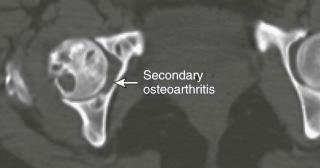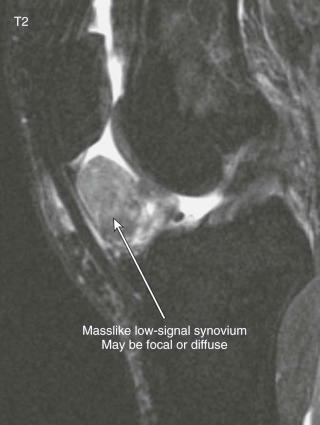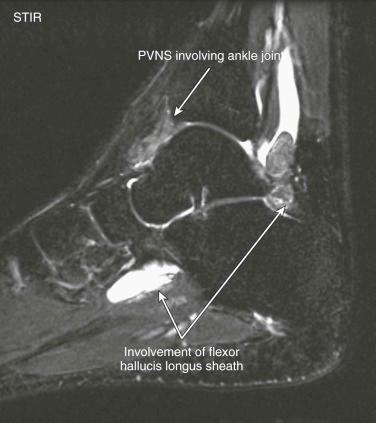Physical Address
304 North Cardinal St.
Dorchester Center, MA 02124
Pigmented villonodular synovitis (PVNS) is a benign proliferative synovial disorder that can occur in a diffuse or localized form and in both intraarticular and extraarticular locations. Although PVNS typically occurs diffusely within a joint, nodular forms exist and, when present, are commonly referred to as localized nodular synovitis. Extra-articular PVNS can involve tendon sheaths or bursae. Localized nodular synovitis of tendon sheaths is generally designated a giant cell tumor of the tendon sheath. These are most frequent in the hand (see eFig. 95-5 ).
PVNS is a monarticular arthropathy most frequently involving the large joints of the lower extremity and mostly affecting the knee. It is seen in decreasing frequency in the hip, ankle, shoulder, and elbow. It typically affects adults 20 to 50 years of age, with no gender predilection.
Patients complain of progressive joint pain, decreased range of motion, and recurrent effusions, sometimes hemorrhagic ( Fig. 63-1 ).

Grossly, a tan mass of villi and folds of synovium appears reddish due to hemosiderin deposition. Histologically, brownish red or tan projections of synovium are composed of fibrous stroma with multinucleated giant cells, xanthomatous cells, and intracellular and extracellular hemosiderin. ( Figs. 63-2 and 63-3 ) Frequently, localized nodular synovitis contains less hemosiderin than its more diffuse articular counterpart (see Fig. 95-11 ).


PVNS in the knee typically manifests as a nonspecific joint effusion on radiographs, although occasionally the fluid may appear dense if hemorrhagic.
Become a Clinical Tree membership for Full access and enjoy Unlimited articles
If you are a member. Log in here